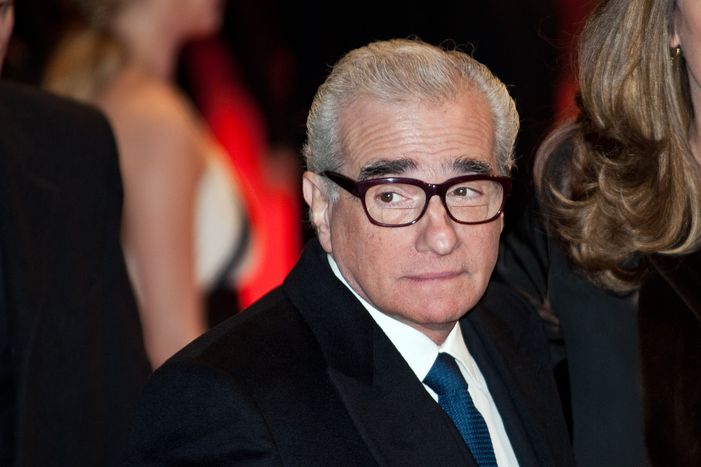
How well do you know Martin Scorsese?
Published on
Translation by:
Arwen DeweyFrom October 14 through February 14 2016, Paris' Cinémathèque Française is dedicating an exhibit and retrospective to the director of "Taxi Driver" and "Goodfellas", a passionate film-maker who lives and breathes cinema.
Whether we like it or not, Autumn 2015 is destined to be Scorsese Season. At the same time as finalising post-production for his next film Silence, with Liam Neeson and Andrew Garfield, as well as working on a new series for HBO, Martin Scorsese will be honoured at the Cinémathèque Française with an exhibit and complete retrospective of all of his films. At the same time, Lyon's Institut Lumière will award him the Prix Lumière, celebrating his entire body of work.
It's an incredibly busy schedule, especially given that at the same time, the 71 year old filmmaker is devoting long hours to his two charitable organizations, The Film Foundation and The World Cinema Foundation, restoring and conserving historic films.
Martin Scorsese is tireless. At the October 12th press conference held at the Cinémathèque Française, he was full of energy, generously eloquent, and thrilled to be preserving so much of his own directorial work, as well as that of directors who have had the biggest impact on his life: Hitchcock, Hawks, Pasolini and others.
A not-so-classic childhood
Martin Scorsese has always been, first and foremost, a ravenous cinephile, exploring cinema across boundaries and time periods. The grandson of Sicilian immigrants, Scorsese was born on November 17th, 1942 in Flushing, Long Island. He had asthma and couldn't play sports with the other children in his neighbourhood; instead he had to choose less physical activities. He went to the cinema regularly and watched his parents' television, devouring everything from classic films to B-movies and westerns, biblical retellings, and Italian neorealism. When he wasn't in front of a screen, he spent his time drawing. He sketched posters for imaginary movies (such as a biblical movie with five-star casting) and made storyboards for future projects.
'Vinyl,' Martin Scorsese's new series
One of the most fascinating parts of the Scorsese exhibit - alongside the photos of film shoots or his family, the costumes and the film excerpts (with commentary) - is discovering the preparatory work behind famous sequences, like the fight between Jake LaMotta and Sugar Ray Robinson in Raging Bull. The technical editing is dynamic, brutal and precise, inspired by the famous shower scene in Psycho. "I think in terms of sequences, anticipate in terms of edited sequences," states the filmmaker. These valuable documents show us the meticulous, thoughtful nature of his directorial work. Every shot is conceived as an opulent living painting, and the whole film as a harmoniously organized and fluid ensemble.
Scorsese's 'Modern Gods'
The exhibit is divided into five sections. One of them sheds some light on the complexity of Scorsese's heroes by taking us back to the filmmaker's Italian-American roots, and his deeply Catholic childhood spent in New York's Little Italy. He even chose to attend a seminary prep school on 86th Street, but his love of rock music eventually got him expelled. Nonetheless, faith plays an important part in his work: faith in people, and in humanity. But how can you have faith when you're living in the heart of chaos? How can you be a good man when you're as violent as everyone else? In Mean Streets, that's Charlie's desperate quest. Charlie is a young gangster fascinated by Saint Francis of Assisi; he tries everything to save his friend Johnny Boy, a hothead who ends up getting on the wrong side of the mafia. It's also Frank Pierce's daily struggle. In Bringing Out the Dead, Frank is a depressed ambulance driver who patrols the underbelly of New York trying to save lost souls as a means of saving his own.
 Is it truly possible to find redemption in this corrupt world? Whatever his characters' intentions are, Scorsese's world is governed by the desire to be more powerful than ordinary people, and the willingness to use violence to get there. Modern gods, those who dictate how the world should turn, are the New York gangsters, the Las Vegas mafia, or Wall Street traders. But in every story of flamboyant, merciless ascension, the hero's wings are inevitably burnt. Even for the assholes, hell is here on Earth.
Is it truly possible to find redemption in this corrupt world? Whatever his characters' intentions are, Scorsese's world is governed by the desire to be more powerful than ordinary people, and the willingness to use violence to get there. Modern gods, those who dictate how the world should turn, are the New York gangsters, the Las Vegas mafia, or Wall Street traders. But in every story of flamboyant, merciless ascension, the hero's wings are inevitably burnt. Even for the assholes, hell is here on Earth.
Few filmmakers keep the creative flame burning like Martin Scorsese. As a filmmaker, he has been able to appropriate the rules of cinematographic language to create a unique, mature body of work, while paying tribute in each of his films to the artists that inspired him. He is a movie buff and a well-informed guide who knows that the history of cinema is still being written, and that it is of vital importance to preserve its memory. In short, Scorsese is one of the great figures of modern cinema. Don't miss this opportunity to (re)discover him.
The Martin Scorsese Exhibition, at the Cinémathèque française de Paris, runs from October 14th, 2015 to February 14th, 2016.
-
This article comes from our local team in Paris, La Parisienne.
Translated from Connaissez-vous vraiment Martin Scorsese?



